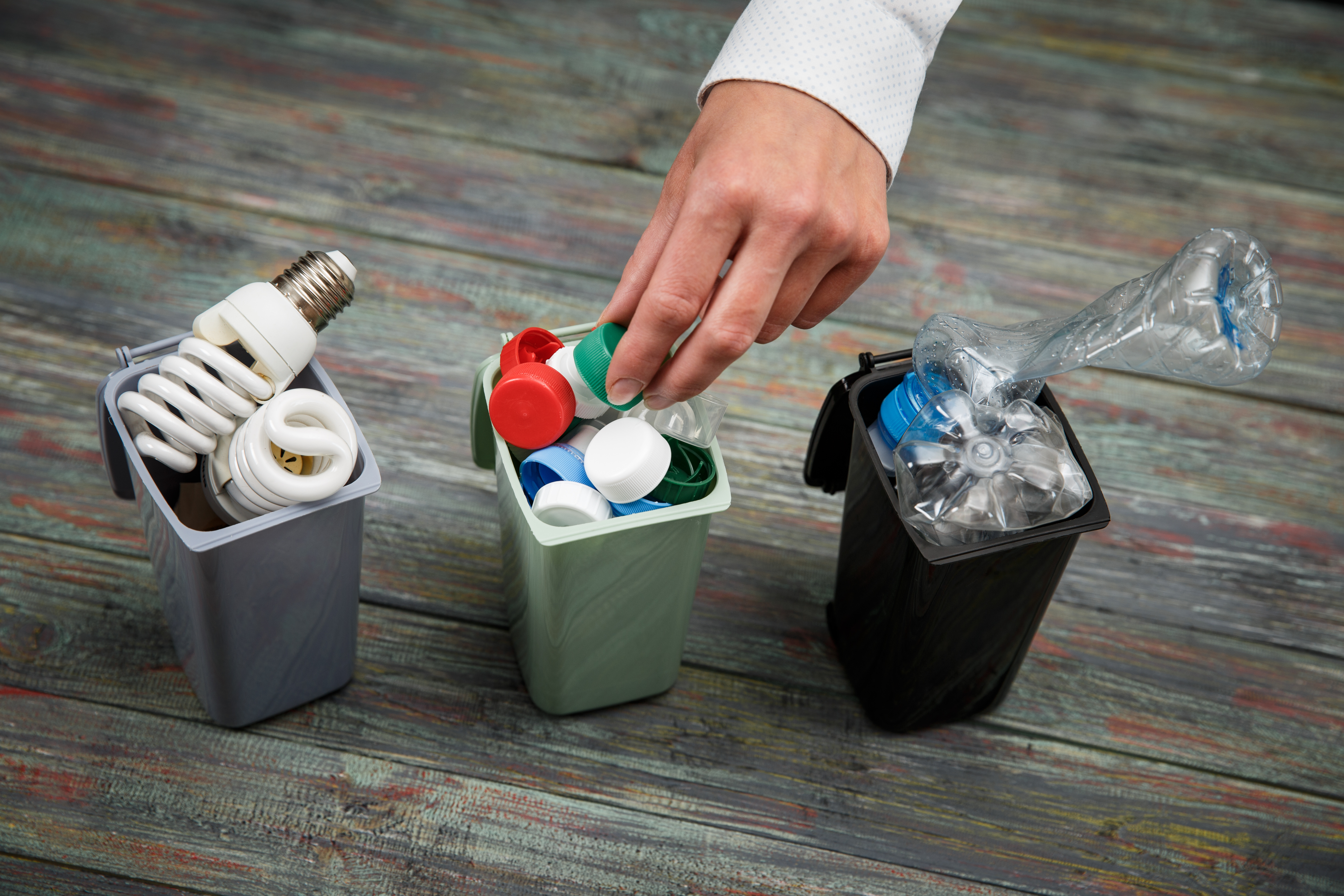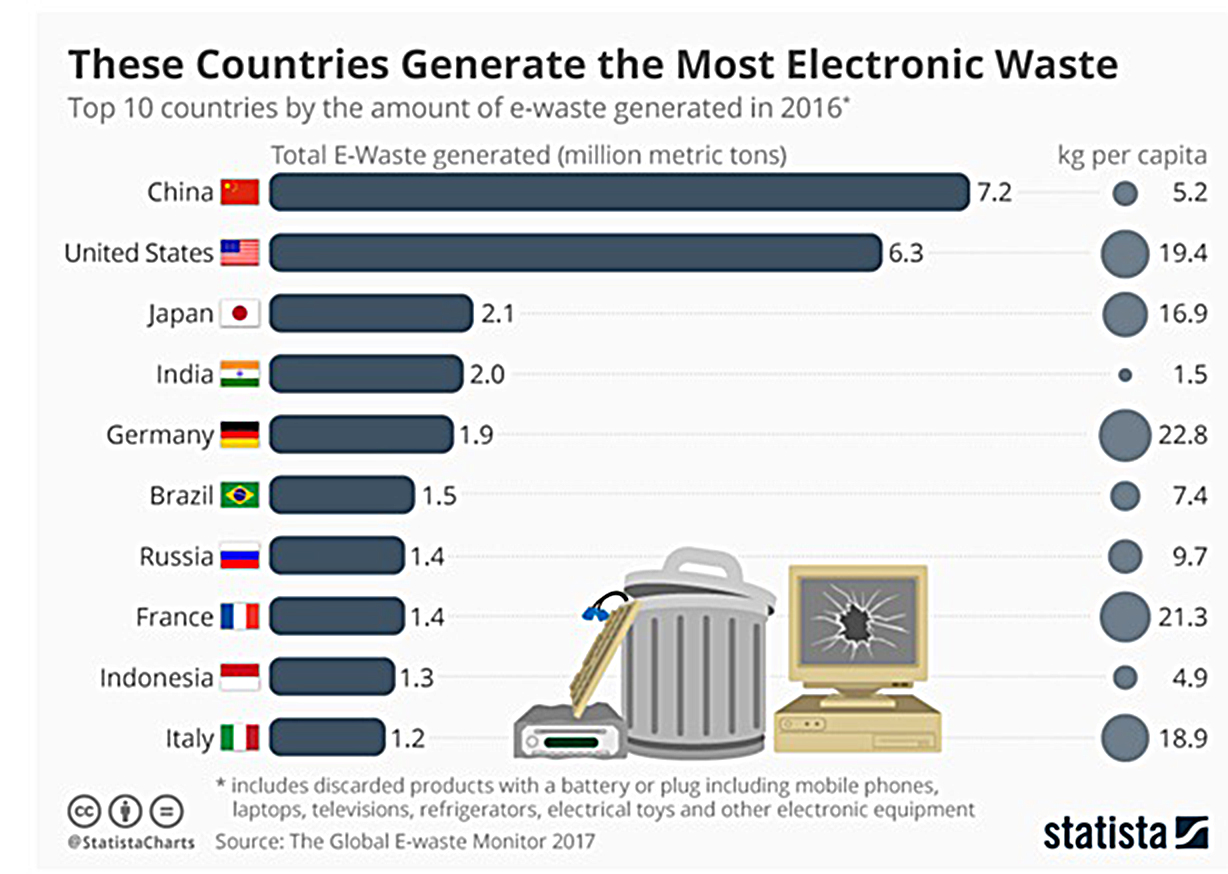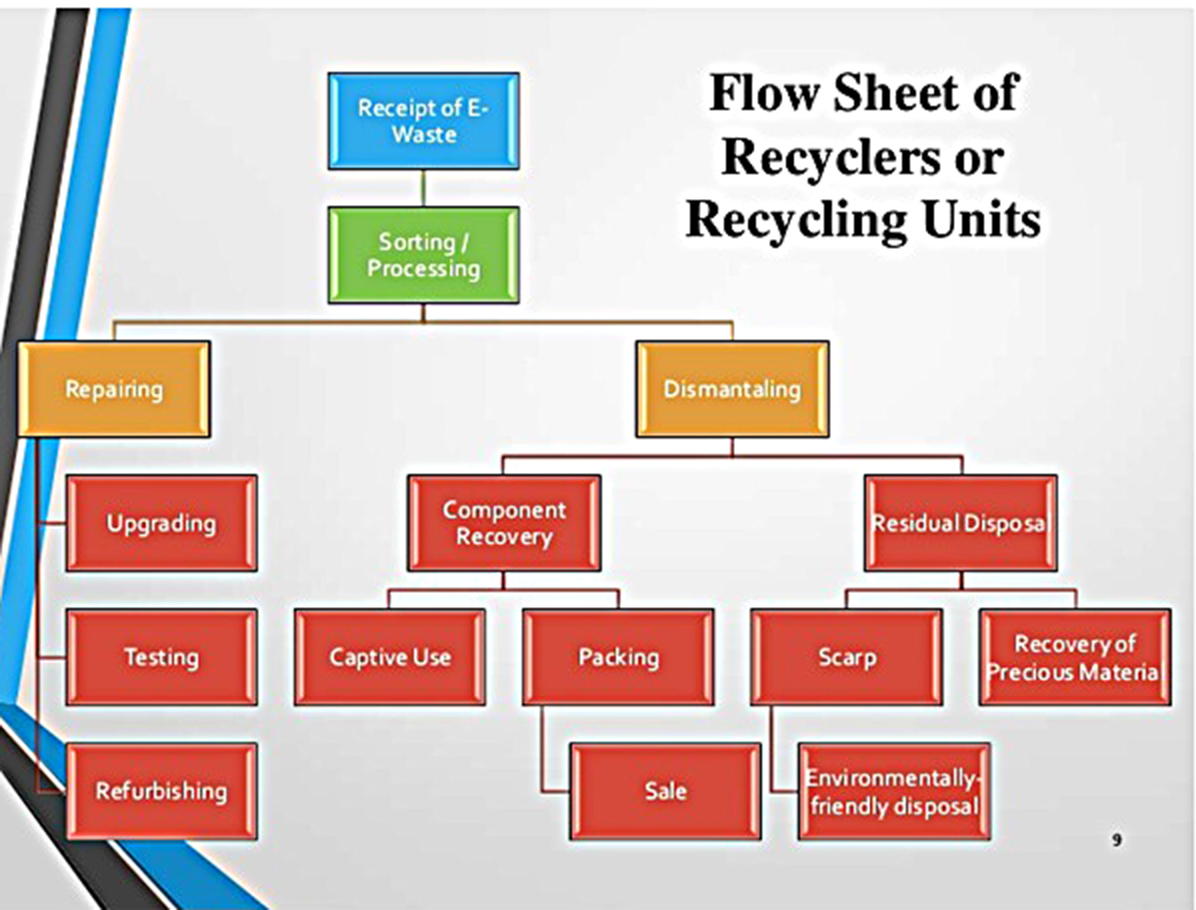Our Blogs

E-waste Management – Challenges and Opportunities
Electronic waste or E-waste management has lately acquired humongous interest among environmentalists, governments and local citizens alike. This is due to the potentially high worth of resources that can be obtained from electronic waste, but which is currently not being undertaken at the requisite scale and as per the prescribed protocol. Another significant aspect is the fact that recycling of electronic waste, if undertaken informally (which it usually is), can lead to human health as well as environmental hazard.
Discarded electronic appliances such as mobile phones, laptops and desktops, televisions etc. constitute e-waste. In other words, discarded electric and electronic equipment (EEE) constitute e-waste. Home appliances such as televisions, air conditioners, electric cookers and heaters, air condoners, fans, DVDs, radios and microwaves among others, information technology equipment such as computers, mobile phones, laptops, batteries, circuit boards, hard disks, and monitors among others, and other electronic utilities such as leisure, lighting, and sporting equipment are common e-waste items.
With technology progressing in leaps and bounds, a better version of an electronic product is taking lesser time to replace its predecessor. Given the sharp marketing skills of technology providers, increasing ease of loan availability and rising consumerism, the time period between purchase of a newer appliance or handheld device is decreasing. The other side of the coin is the rapidly rising mounds of discarded electronics – or e-waste.
To understand the extent of EEE usage in India, it may be noted that there were 1.1 billion mobile users in India in 2016, this number being nearly 4 times that of United States today and being second only to China in the world, which has 1.3 billion subscribers. In addition to mobile phones, then there are 57 million computers in use and a whole plethora of other gadgets and consumer electronics.
Fig. 1: Contributing Factors to the E-waste Challenge
No wonder then, the volume of e-waste generation in India is tremendously large, to the tune of 1.85 million tons a year; in fact, India is among the top five electronic waste generators in the world, next only to China, United States and Japan.

Fig. 2: The Top-most E-waste Generating Countries
In India, as in several other developing countries, waste management is largely carried out by the unorganized sector. However, this may have extremely serious negative impact on the health of the handlers of electronic waste. One incident of Uttar Pradesh serves as an indicator of the problem - 27 illegal e-waste industries were dumping the waste into the Ramganga, causing irreparable damage to the river and its surrounding environment.
In India, the policy framework of e-waste management is dominated by the Electronic Waste (Management and Handling) Rules 2011, under the aegis of the umbrella act – Environment Protection Act 1986. Prior to these rules, e-waste was covered under the Hazardous Waste Management Rules 2008.
The Electronic Waste (Management and Handling) Rules 2011 aim at enabling recovery and/or reuse of useful material from e-waste, thereby reducing the hazardous wastes destined for disposal, to ensure the environmentally sound management of all types of e-waste and to address the safe and environment-friendly handling, transport, storage, and recycling of e-waste. The concept of Extended Producer Responsibility (EPR) was introduced through these rules, which made manufacturers liable for safe disposal of electronic goods.
Thereafter, the E-Waste (Management) Rules, 2016 were enacted in supersession of the 2011 Rules. Manufacturers, dealers, refurbishers and Producer Responsibility Organizations (PRO) were also brought under the ambit of these Rules. PRO is a professional organization authorized or financed collectively or individually by producers, which can take the responsibility for collection and channelization of e-waste generated from their products to ensure environmentally sound management. An option was given for setting up of a PRO as an additional channel for implementation of EPR by Producers. Further, a collection mechanism-based approach was adopted for collection of e-waste by Producers under EPR. Furthermore, the applicability of the Rules was expanded to cover components, consumables, parts and spares of EEE in addition to the equipment covered under the Rules.
The rules have been further amended in 2018. The amended Rules attempt to ensure that e-waste is channelized towards authorized dismantlers and recyclers only. The Rules revise the collection targets under the provision of EPR. By way of revised targets and monitoring under the Central Pollution Control Board (CPCB), effective and improved management of e-waste would be ensured. As per the revised targets of e-waste collection, 10% of the quantity of waste generated shall be collected during 2017-2018. Further, there shall be a 10% increase every year until the year 2023. After 2023, the E-Waste collection target has been fixed at 70% of the quantity of waste generation.
However, India is sadly lacking in the requisite number of authorized and qualified e-waste recyclers – barely 1.5% of our e-waste is adequately recycled.
Much of the e-waste generated is recyclable. Computer equipment such as monitors and printed circuit boards have a number of base metals which can be reused after melting.
However, the e-waste recycling process is highly labour-intensive and goes through several steps.

Fig 3: Outline of the E-waste Recycling Process
Below is the step-by-step process of how e-waste is recycled:
Picking Shed
When the e-waste items arrive at the recycling plants, the first step involves sorting all the items manually.
Disassembly
After sorting by hand, the second step involves a serious labor intensive process of manual dismantling. The e-waste items are taken apart to retrieve all the parts and then categorized into core materials and components. The dismantled items are then separated into various categories into parts that can be re-used or still continue the recycling processes.
First size reduction process
Here, items that cannot be dismantled efficiently are shredded together with the other dismantled parts to pieces less than 2 inches in diameter. It is done in preparation for further categorization of the finer e-waste pieces.
Second size reduction process
The finer e-waste particles are then evenly spread out through an automated shaking process on a conveyor belt. The well spread out e-waste pieces are then broken down further. At this stage, any dust is extracted and discarded in a way that does not degrade the environmentally.
Over-band Magnet
At this step, over-band magnet is used to remove all the magnetic materials including steel and iron from the e-waste debris.
Non-metallic and metallic components separation.
The sixth step is the separation of metals and non-metallic components. Copper, aluminum, and brass are separated from the debris to only leave behind non-metallic materials. The metals are either sold as raw materials or re-used for fresh manufacture.
Water Separation
As the last step, plastic content is separated from glass by use of water. One separated, all the materials retrieved can then be resold as raw materials for re-use. The products sold include plastic, glass, copper, iron, steel, shredded circuit boards, and valuable metal mix.
E-cycle components re-use
1. Plastic. All the plastic materials retrieved are sent to recyclers who use them to manufacture items such as fence posts, plastic sleepers, plastic trays, vineyard stakes, and equipment holders or insulators among other plastic products.
2. Metal. Scrap metals materials retrieved are sent to recyclers to manufacture new steel and other metallic materials.
3. Glass. Glass is retrieved from the Cathode Ray Tubes (CRTs) mostly found in televisions and computer monitors. Extracting glass for recycling from CRTs is a more complicated task since CRTs are composed of several hazardous materials. Lead is the most dangerous and can adversely harm human health and the environment. Tubes in big CRT monitors can contain high levels of lead of up to 4 kilograms. Other toxic metals such as barium and phosphor are also contained in CRT tubes. To achieve the best environmentally friendly glass extraction, the following steps ensure a specialized CRT recycling:
Manual separation of the CRT from the television or monitor body:
Size reduction process where the CRT is shredded into smaller pieces. Dust is eliminated and disposed in an environmentally friendly way.
All metals should be removed through over-band magnets, where ferrous and non-ferrous components are eliminated from the glass materials.
A washing line is then used to clear oxides and phosphors from the glass
Glass sorting is the final step whereby leaded glass is separated from non-leaded glass. The extracts can then be used for making new screens.
4. Mercury. Mercury containing devices are sent to mercury recycling facilities that use a specialized technology for elimination for use in dental amalgams and metric instruments, and for fluorescent lighting. Other components such as glass and plastics are re-used for manufacture of their respective products.
5. Printed Circuit Boards. Circuit boards are sent to specialized and accredited companies where they are smelted to recover non-renewable resources such as silver, tin, gold, palladium, copper and other valuable metals.
6. Hard Drives. Hard drives are shredded in whole and processed into aluminium ingots for use in automotive industry.
7. Ink and Toner Cartridges. Ink and toner cartridges are taken back to respective manufacturing industries for recycling. They are remanufactured while those that cannot are separated into metal and plastic for re-use as raw materials.
The E-waste management scenario in India is dominated by a handful of Pollution Control Board (PCB)-recognized recyclers. A few among them are:
- E-Parisaraa is among the earliest e-waste recyclers in India, operating since 2005 out of Bengaluru.
- Eco Recycling Ltd (Ecoreco) is among India's first and leading professional E-waste Management Company. It is based out of Mumbai and caters to end-to-end EEE waste management.
- E-Waste Recycling India (EWRI) is a leading electronic waste recycler in Mumbai. It began operations from 2013, and is occupied with taking care of, reusing and recycling of Waste Electrical and Electronic Equipment in an eco-benevolent way.
- Green India Recycling was founded in 2015 as a new business venture for promoting E-waste Recycling.
